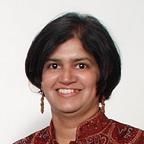Soil Workshop: The Need for Farmer-Friendly Indicators of Soil Health
A workshop organised by P Srinivas (Soil Vasu) and Rainmatter Foundation and facilitated by CSEI-ATREE on May 10, aimed to drive consensus on these indicators.
A recent report cited that India’s Soil Organic Carbon (SOC) content in India has come down to 0.3% from 1% in the past 70 years. SOC is the main component of soil organic matter and gives soil its water-retention capacity, structure, and fertility. Therefore, a reduction in soil organic carbon is a major concern for agricultural productivity.
Loss of soil organic material and shrinking soil biodiversity is the main indication of diminishing physical and biological components of soil quality. But we do not have robust baselines.
For instance, in 2016, the first-ever Global Soil Biodiversity Atlas was published by the European Commission Joint Research Centre and the Global Soil Biodiversity Initiative. The atlas illustrates the diversity of soil organisms, their distribution, and the ecosystem functions and services they provide. It also draws attention to the main threats to soil biodiversity. But there is limited data from India and the data are not easily accessible to farmers in terms they can understand. We need farmer-friendly indicators of soil health that are also scientifically defensible.
A workshop organised by P Srinivas (Soil Vasu) and Rainmatter Foundation and facilitated by CSEI-ATREE on May 10, aimed to drive consensus on exactly this.
P. Srinivas, popularly known as Soil Vasu, runs a non-governmental organisation, also named SOIL (Sustainable Organic Initiatives for Livelihood), which aims to educate farmers on the importance of soil health. Soil Vasu aims to curate a soil biodiversity atlas for India, but with a key difference —it will be a dataset created by and for farmers.
The objective of this workshop was to reach a consensus on what a farmer-led “citizen science” approach to assessing the state of soils in the country might look like. The workshop included prominent water and soil scientists, organic certification companies, progressive farmers, and activists. Some of the key insights that we, as non-soil experts interested in regenerative agriculture, derived from this workshop were:
First, there were two clear groups with very different approaches and methodologies.
Researchers who focused on soil chemistry (traditional agricultural scientists) and those who focused on soil biology (organic farmers and activists). The workshop highlighted a critical need to synthesise the state of the science on soil microbiomes and their impact on agricultural productivity.
Second, the role of water and irrigation in degrading soils through soil salinisation has long been recognised.
Mainstream scientists’ approach to addressing this involves civil engineering techniques such as flushing soils and building drains. In contrast, organic farmers recommended studying what types of vegetation were able to thrive on salinised soils and focusing on using them to create incomes.
The dichotomy between the “fix vs. adapt” approaches was interesting to us as we begin to explore how to intervene in salinity-affected agricultural lands in Raichur through the AREST program.
Third, there was a clear difference between how the regenerative/ organic farmers vs. the agricultural scientists described water requirements.
The organic farmers were interested in sustaining soil moisture — therefore a lot of their focus was on mulching and preventing bare soil evaporation. In contrast, the agricultural engineers were focused on irrigation both to compensate for soil moisture deficits and to flush out excessive nutrients. It was not clear to us how much current irrigation practice is primarily to flush soils. Overall, even as soil microbiomes and their role in agricultural productivity in regenerative agriculture are just beginning to be investigated scientifically, the implications for irrigation water use emerges as a major gap in understanding.
Finally, there was agreement that soil organic carbon is a useful (though imperfect) proxy for the state of the soil biota and it is something that IS measured nationwide.
Soil health cards are available at the plot level for the whole country. There is thus a huge opportunity to synthesise and make available the existing data so that it becomes more accessible to researchers and practitioners alike.
Next Steps
The objective of the workshop was to develop a framework for what a farmer-led soil biodiversity atlas might look like — what low-cost techniques are valid, which parameters to prioritise etc. To achieve this, Soil Vasu and others had prepared an initial survey questionnaire. The next step is a follow-up meeting to get a wide range of soil experts to validate it. This meeting is planned to take place in June.
